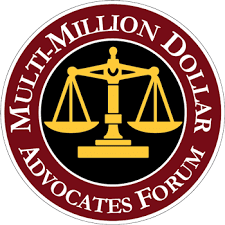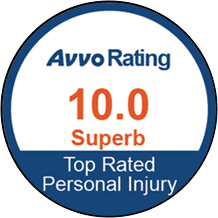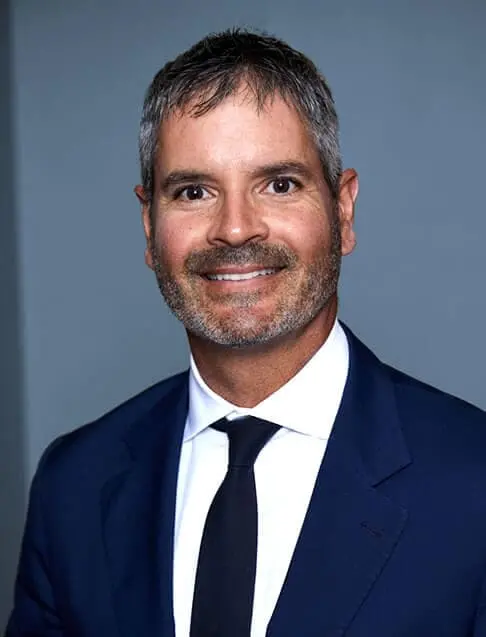Slip & Fall Accidents
At Queller, Fisher, Washor, Fuchs & Kool and The Law Office Of William A. Gallina, LLP, our slip and fall lawyers in NYC are experienced in protecting the rights of clients who have been seriously injured or killed on public or private property. Business owners, landlords and private property owners have a duty to provide safe and secure premises for their guests. When an owner neglects to repair or warn guests of a hazardous area on their property, they may be liable for any injuries that result.
Individuals who have suffered a slip and fall injury due to a property owner's negligence may be able to file a lawsuit to recoup compensation for any damages incurred. Our slip and fall lawyers have handled countless cases for individuals who have suffered injuries in slip and fall accidents, as well as trip and fall incidents. We have secured a number of verdicts and settlements through slip and fall lawsuits, including numerous recoveries exceeding $1 million.*
Schedule a Free Case Evaluation
What Are Some Common Types Of Slip And Fall Accidents?
Fall down accidents are amongst the most common cases that exist in the field of personal injury law. Our NYC slip and fall lawyers have handled so many variations of slip/trip and fall accident cases that they are too numerous to mention. Some accidents that our firm has handled include sidewalk falls, slip and falls from snow or ice and trip and falls.
Snow And Ice Falls

Property owners doing business adjacent to sidewalks have a duty and responsibility to clear the snow or ice on the sidewalk in front of their premises with reasonable care, within a reasonable period of time. Upon failure to do this, serious fall down accidents often occur. Liability or fault, or in other words the issue of whether the business or landowner is negligent, often hinges upon how much time has elapsed between the time of the weather (snow, ice or other precipitation) that leads to the hazardous condition, and the time that the area was cleaned or cleared. The clearance of snow and ice might take place by the use of salt, shovels, snow machines or other means. The key to liability rests on the issue of the timing of when the area is cleared, and whether it was done with reasonable care under the circumstances. Although injuries from sidewalk falls are common, they certainly only scratch the surface of the circumstances under which a person can sustain a serious injury due to a fall caused by another person or entity.
What Are Some Common Injuries Caused By Snow And Ice Falls?
All snow or ice-related falls have the potential to result in serious injuries and damages, especially in instances where the victims are elderly. Some of the most common snow and ice injuries that result in premises liability lawsuits include:
- Broken bones
- Leg injuries
- Knee injuries
- Back injuries
- Neck injuries
- Spinal cord injuries
- Brain injuries
- Concussions
The aforementioned injuries, however, are not in and of themselves grounds for a lawsuit. In order to have a valid lawsuit, the fall must have resulted in either economic or non-economic damages. Economic damages are any medical costs not covered by insurance. Non-economic damages are any long-term emotional stress or pain and suffering caused by the injury.
Who Is Liable If A Fall Is Caused By Snow Or Ice?
An accident caused by the presence of snow and ice often occurs on private property or New York City sidewalks. When an accident occurs on private property, the landowner and/or tenant may be legally responsible for your injury. If the accident occurred on a sidewalk, then the owner of the property adjacent and next to the sidewalk may be liable.

The issue of whether liability or fault can be proven against the defendant in your case often depends on the issue of "notice." In other words, was there enough time between when it snowed or when ice formed and the time of your accident to be able to prove that the responsible party knew or should have known of the snow, ice or slippery condition and cleared the property prior to the time that your accident happened. In order to prove notice or that the defendant knew or should have known of the dangerous condition prior to your accident, there are numerous details that must be carefully investigated by your slip and fall attorney and dealt with properly during the "discovery" phase of your slip and fall case.
It is important to note when the poor weather that caused your slip and fall occurred. Weather reports can often be obtained to determine how much and what type of precipitation (rain, sleet or snow) fell on the day of your accident and on the days before your accident. The records should be obtained from the weather station closest to the accident location, and a certified copy of such records may be needed for admissibility purposes in the event that your case goes to trial. If the condition that caused your accident still exists, photographs should be taken whenever possible. Also, an investigation should be done to determine the identity of any eyewitnesses to the conditions that were present at the time of your accident. Such witnesses may be helpful at trial, or in laying the foundation for settling your case through deposition testimony regarding the dangerous conditions.
As the litigation proceeds, your NYC slip and fall lawyer will have the opportunity to take the deposition of one or more representatives of the defendant property owner or property tenant. In some instances, a deposition is taken of a representative of a management company for the property. At this point, the issue of notice (i.e., what the defendant knew and when they knew it) is further investigated. A good slip and fall attorney will do a full interrogation regarding many factors that may be crucial to proving liability or fault in your case. These include but are not limited to finding out information regarding the following:
- The identities of any and all employees or agents of the defendant who had the opportunity to observe and/or become aware of the dangerous conditions.
- The identities of any persons whose job responsibilities included monitoring, inspecting or cleaning the accident location, including but not limited to the responsibility of clearing the relevant area of snow and ice.
- Any schedules that were in effect and any practice or procedure that the property owner or other defendant followed for inspecting or cleaning the property.
- Any records that exist regarding any of the above, as well as any records that exist regarding actual steps that were taken to clear the dangerous area of snow and/or ice prior to your accident.
- If the defendant claims they actually did take steps to clear the sidewalk, questions need to be answered regarding the manner in which it is claimed that the sidewalk was cleared. For example, what equipment was allegedly used to clear the sidewalk? Was a snowplow or other machinery used? Were manual methods to clear the sidewalk (such as the use of snow shovels or salting of the sidewalk) employed? If so, who did this and when?
The above examples represent just a few of the numerous issues that will be addressed by an experienced slip and fall lawyer. There is rarely the situation of a simple, straightforward or easy slip and fall case.
What Is A “Transient” Condition?
A slip and fall on snow or ice (or on anything else for that matter) usually involves a fall that occurred due to what is known as a "transient" condition. In other words, the condition was there, but it may now be gone. As a result, defendants take every opportunity to deny liability. The property owner or tenant may defend your lawsuit by claiming that the dangerous or defective condition never existed in the first place. Alternatively, the defendant may argue that even if the condition did exist, they did not know about it in time and could not have exercised reasonable care and fixed the condition prior to your accident. Of course, the defendant may also claim that your accident did not happen at all, or that your serious injuries are somehow unrelated to the accident. There is no shortage of claims or defenses that may be set forth by a party to try to avoid liability for causing serious injury in a slip and fall accident. Therefore, it is imperative to have a highly-qualified and experienced slip and fall lawyer in NYC represent you if you have been seriously injured due to a slip and fall on snow or ice.
How Do I Schedule A Consultation With Your Slip And Fall Lawyers In NYC?

If you or someone you love has suffered an injury due to a slip and fall accident, you may be entitled to compensation. For a free consultation with our slip and fall lawyers in NYC, call our Manhattan office at 212.406.1700, our Bronx office at 718.892.0400 or contact us online. We will review your case and discuss your legal options with you. The attorneys at Queller, Fisher, Washor, Fuchs & Kool and The Law Office Of William A. Gallina, LLP take all cases on a contingency fee basis, meaning our services are free of charge unless there is a monetary recovery. Our law firm is proud to serve the New York City area, including the Bronx, Brooklyn, Manhattan, Queens and Staten Island, as well as the surrounding counties and New Jersey. We offer legal services in English, Spanish, Portuguese, and Chinese.